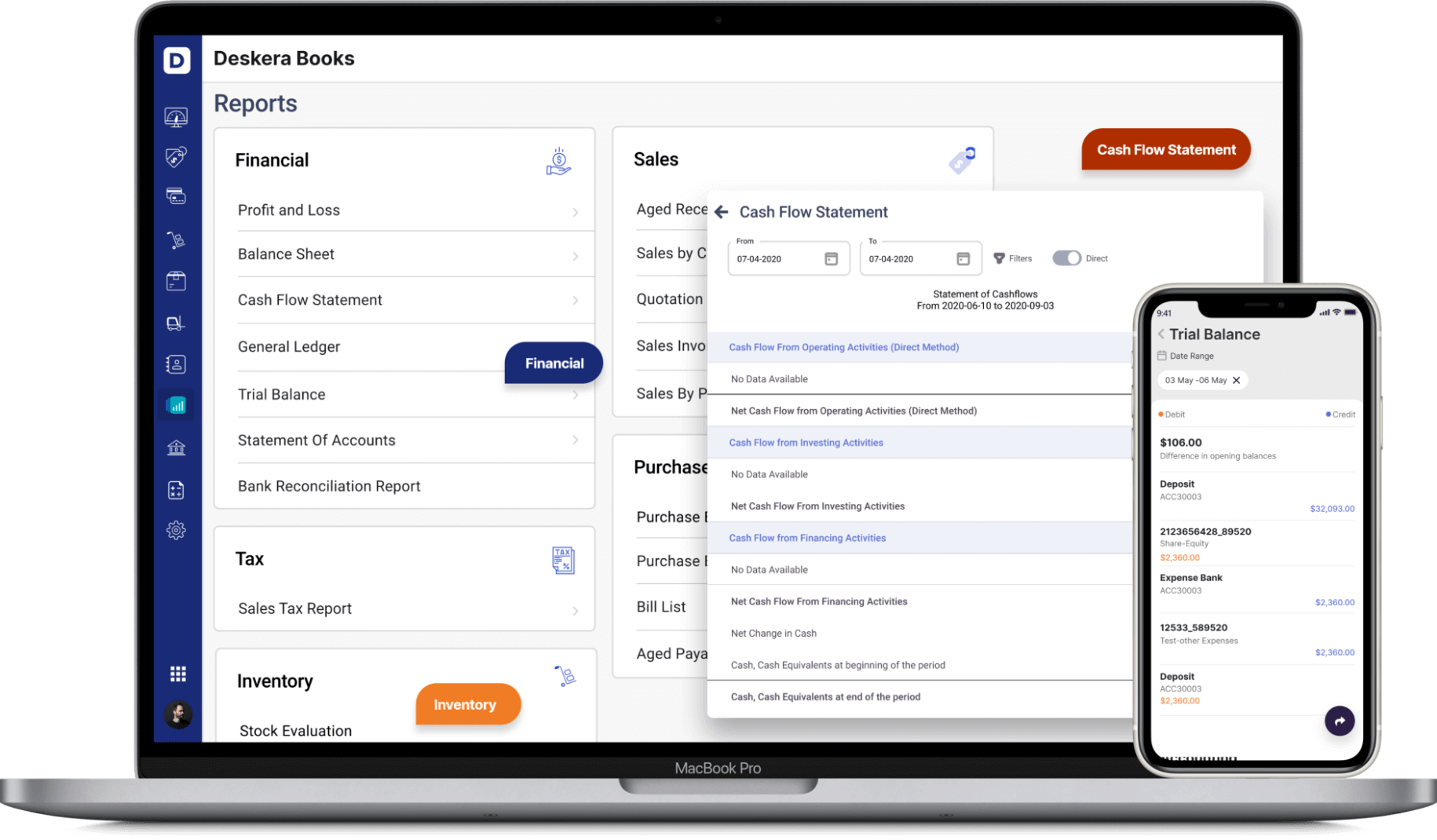It costs money to bring in money. Now is the time we start analyzing our profits from the business. Each effective business keeps its expenses underneath income to generate profits. One way by which we can estimate a company's profit is its gross margin, which is the level of income it holds and then deducting the expenses involved in the sale of products. Let us dive deeper into this concept.
Here is an overview of the key points for Gross Margin Ratio:
- Gross Margin: Definition
- Total revenue or net sales
- Cost of goods sold (COGS)
- Gross Margin Ratio
- Gross margin versus net margin
- What are the Benefits of understanding the Gross Margin Ratio?
- What is a Good Gross Margin Ratio?
Gross Margin: Definition
The profit we earn after goods have been sold and before the administrative, interest, general expenses are considered is Gross Margin. It deducts the cost of goods sold from net sales. Gross edge can likewise be a level of the net deals of a business. Gross margin can likewise be a percentage of the net sales of a business. Gross margin is the percentage of income that a company keeps after deducting direct expenses such as materials and labor.
It is easy to compute the gross margin for a specific product offering of a business or it very well may be determined for each unique type of product. To calculate gross margin, the following components are involved;
Total Revenue or Net Sales:
Sales create income, yet not all services and products sell at list costs. Now and then, allowances are granted or discounts are applied. Once in a while, items might be returned. The total sales figure is gross revenue minus any concessions like discounts, recompenses, or returns.
Cost of goods sold (COGS)
As organizations make their services and products, they cause costs. They might have to buy raw materials or finished goods. Then, at that point, there's the work that goes into making the item or delivering the service. The Cost of goods sold is the total cost of labor and material.
Gross Margin Equation
Gross margin can be determined for the whole business as well. The gross margin is determined dependent on the gross margin equation.
Net sales – COGS = Gross Margin
Net sales
Example to calculate Gross margin
GCF Enterprises, a company based in Texas manufactures corrugated boxes. The company managed to clock net sales of $27.8 million according to the annual report of 2020. Calculate the gross margin of the company for the data available:
Solution: Cost of Goods Sold = Raw Materials Cost + Direct Labor Cost + Factory Rental Expense
=$6.50 + $1.20 + $9.50
Cost of Goods Sold =$17.20
Gross Margin= Net Sales– COGS / Net Sales
= ($27.80 million – $17.20 million) / $27.80 million
=0.3813 (in dollar value)
Gross Margin Percentage Formula
Net Sales – COGS / Net Sales x 100
This gross margin equation gives a value in percentage. The total income is how much your business makes from net sales. The cost of goods sold is the amount it costs your business to sell those goods. Cost of goods can incorporate costs, for example, labor expenses and material costs that you needed to spend to manufacture that item.
You can manage your accounting via cloud platforms like Deskera

Gross Margin Ratio
The gross margin ratio is a profitability ratio that sets a comparison between the gross margin of a business to the net sales. This ratio estimates how beneficial an organization sells its stock or product. All in all, the gross profit ratio is the percentage markup on goods from its costs. This is the unadulterated profit from the sale of stock that can go to paying operating expenses.
The gross margin ratio is regularly mistaken for the profit margin ratio, yet the two ratios are unique. The gross margin ratio considers the cost of goods sold in its analysis since it estimates the profitability of selling stock.
The profit margin ratio incorporates other expenses. The Gross margin ratio is a rate resulting from dividing the portion of an organization's gross profit by the measure of its net sales.
Organizations keep checking their Gross margin ratio to be sure they are good enough to cover their administrative, interest, general, and selling expenses, and to gain a profit. The only data required for calculating the gross margin ratio is the total cost of goods sold and total revenue for that time.
Gross Margin Ratio Formula
The equation for calculating gross margin ratio percentage ratio is:
Gross Margin Ratio = (Total Revenue - Cost of Goods Sold) ÷ Total Revenue x 100
Just with a financial such as an income statement, calculating gross margin ratio or gross profit margin becomes a simple process.
Example to calculate Gross Margin Ratio
Anarvin Resorts generated revenues of $320,000 in January, while his COGS was $60,000. In this example we are not including any general expenses, only expenses directly related to manufacturing the goods and services are included.
Solution: ($320,000 - $60,000) ÷ $320,000 x 100 = 81.25%
The above result means that for every dollar Anarvin Resorts brings in, 81.25% of it is available to pay for operations.
Realizing your gross margin ratio or proportion is amazingly useful for small as well as huge organizations. The gross margin ratio is a profitability ratio that represents how beneficial an organization can sell its stock. It just checks out that higher ratios are more profitable. Higher proportions mean the organization is selling its stock at a higher profit rate.
High ratios can normally be accomplished in two different ways. One way is to buy stock extremely cheaply. Retailers can get a purchase discount when they purchase their stock from the wholesaler or distributor, their gross margin will be higher in light of the fact that their expenses are down. The second way retailers can achieve a higher ratio is by marking their goods up higher.
This unmistakably must be done competitively otherwise goods will be expensive and clients will shop somewhere else. An organization with an upper gross margin ratio implies that organization will have more money to pay operating expenses like salary, utilities, and rent. Since this ratio estimates the profits from selling stock, it likewise analyses the percentage of sales that can be utilized to help with subsidizing varied parts of the business.
Gross margin versus net margin
Gross margin is the level of profits before any derivations (operational expense). While net margin, likewise known as the profit margin is the ratio of net profit to revenue.
Both net margin and gross margin are usually communicated in percentage. The gross margin will forever be higher than the net margin since it doesn't deduct any costs.
What are the Benefits of understanding the Gross Margin Ratio?
1. Gross margin is significant for some reasons and one of them is the capacity to analyze a business. It empowers key leaders to know which products should be marketed and advanced so they can improve sales and work on their main concerns. It permits you to comprehend which products aren't profitable in which case you can further develop it or stage it out and hold onto its production.
Gross margin allows you to comprehend on the off chance that it is feasible to build a product’s selling price when expenses are expanding. It can assist with deciding the best and safe game-plan when the contender has discounted its costs. Gross margin allows investors the opportunity to examine whether a stock is worth purchasing.
2. Gross margin empowers a business to check out whether it can control its production costs. Assuming it can do as such, then, at that point, it can enjoy further developed profits. For instance, you can check how your business is doing over the long haul and think about your performance over various periods.
Because of the gross margin, you can comprehend in case your business activities are improving or assuming they are becoming wasteful. Gross margin can be utilized to contrast your business with other businesses in the same industry. The correlation will be productive in case the business size is comparable.
3. Gross margin gives basic data on the creation of ROI. Assessing gross margins over the long haul can assist with cost control. Minor changes in gross margin can feature issues in the supply chain. Has the cost of materials increased, or has a supplier increased its cost? Is it taking more time to deliver than expected?
Processes may need to be changed to improve productivity. It's not that easy to overlook minor shortcomings as long as margins are high, yet a drop in gross margin could flag a decrease in efficiency. The more proficient production, the higher the margins. The higher the margin, the better the organization.
4. Gross margin can be utilized to foster pricing strategies. Products are usually priced dependent on market competition. Organizations in a given market acknowledge "standard" margins rather than exploring pricing choices. A few organizations will diminish margins to build gross sales to observe the perfect price point.
Others will try to expand margins by setting more higher pricing and promoting value add. Analysis of gross margins can help in identifying the best pricing method to achieve higher profits and a solid financial future.
5. Gross margin estimates business effectiveness: Gross margin can also play a role as the ratio of organizational efficiency. If income statements are made available on a quarterly or say monthly basis, it becomes easy to analyze the gross margin figures. Is it staying steady or is it predictable?
In case margins are rising, that might be a sign of further improved efficiencies. A decrease in gross margin might show failures. It can likewise prove that bringing the price down to build sales is adversely affecting financial steadiness.
6. Gross margin helps succeed in the competitive space: Investors consider gross profit percentage understand the profit of organizations from various market sectors or industries. For instance, investors are analyzing a manufacturing organization and expert service groups for possible speculation.
Utilizing the gross margin percentage from financial reports, experts can decide any organization's profit and realize which organization has more strong development potential. High margins make it simpler for organizations to track down extra funding.
What is a Good Gross Margin Ratio?
Gross margin ratios shift by industry.
Let us take an example of a Good Gross Margin Ratio:
Technology-based organizations show a gross margin of more than 95% for the current quarter. Retail shows the most minimal gross margin at just under 25% for a similar period. Such wide patterns in gross margin make comparisons outside of an industry unimportant to organizations within the industry. So what does a decent gross margin resemble?
Rationale: Deciding on a good gross margin requires setting. Consider the retail area for instance. Last year, the gross margin drifted around half, making organizations with a gross margin of under 25% poorly performing. After a while, the highest-performing organizations are doing more awful than the lowest-performing organizations from a year prior. Following key performance indicators (KPIs) is the most ideal way to decide financial wellbeing.
Throughout the past year, the gross margin for technology has changed somewhere in the range of 50 - 55%. The current quarter's margin is no doubt the consequence of financial factors even after improving efficiencies. To be more precise, the drastic increment to 95% is the consequence of external elements that have driven up technology sales. Organizations inside this area ought to follow KPIs to make up for the current increase in sales.
Wrapping up
The gross margin ratio estimates the measure of assets held after goods and services have been sold. The gross margin ratio is important because it focuses on product profits, which tell us if enough money is brought in from selling your items and services.
This simple margin ratio equation can show how effective your present business activities are, assuming that you're performing within industry standards.
The gross margin ratio additionally assists you with deciding the profitability of the labor and products your business gives. Analyzing your gross margin ratio consistently can assist you with spotting trends and caution you to any huge changes before they become significant issues.
Key Takeaways
- Gross margin gives a glimpse of an organization's capacity to productively control its inventory costs, which should assist the organization with delivering higher profits in its income statement
- Evaluating gross margin is valuable for correlation purposes. Deciding an organization's gross margins gives knowledge into whether the organization's activities are turning out to be pretty much effective.
- Deciding the gross margins of different organizations inside a similar industry is one more sort of correlation, and it can assist you with understanding which market members have the most productive operations.
- The gross margin tells an entrepreneur definitively how much money is accessible to cover any remaining costs. The gross margin is more than just a number. It is a window into the monetary strength of an organization.
- It estimates production and business efficiencies. It can assist with setting the selling cost of an item and competitive analysis. Gross margins can recognize expected risks before they hurt the reality.
Related Articles











